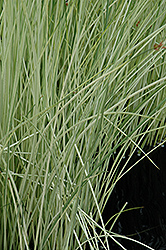Height: 4 feet
Spread: 3 feet
Sunlight:
![]()
![]()
Hardiness Zone: 5
Description:
A marginal pond plant that will make a dramatic frame to any water feature; tall, thin, tubular leaves emerge white, and mature to light green; white color is maintained by removing older foliage
Ornamental Features
White Rush's grassy leaves emerge white in spring, turning emerald green in colour with prominent light green stripes throughout the season on a plant with an upright spreading habit of growth.
Landscape Attributes
White Rush is a dense herbaceous perennial with an upright spreading habit of growth. Its relatively fine texture sets it apart from other garden plants with less refined foliage.
This plant will require occasional maintenance and upkeep, and can be pruned at anytime. Deer don't particularly care for this plant and will usually leave it alone in favor of tastier treats. It has no significant negative characteristics.
White Rush is ideally suited for growing in a pond, water garden or patio water container, and is recommended for the following landscape applications;
- Mass Planting
- Border Edging
- Water Gardens
- Bog Gardens
Planting & Growing
White Rush will grow to be about 4 feet tall at maturity, with a spread of 3 feet. Its foliage tends to remain dense right to the water, not requiring facer plants in front. It grows at a fast rate, and under ideal conditions can be expected to live for approximately 10 years. As an herbaceous perennial, this plant will usually die back to the crown each winter, and will regrow from the base each spring. Be careful not to disturb the crown in late winter when it may not be readily seen!
This plant does best in full sun to partial shade. As an aquatic plant, it requires a suitable water garden environment and will benefit from special planting and ongoing care practices; consult one of our in-store experts for further details and instructions. It is not particular as to soil pH, but grows best in rich soils. It is somewhat tolerant of urban pollution. This species is native to parts of North America. It can be propagated by division.


